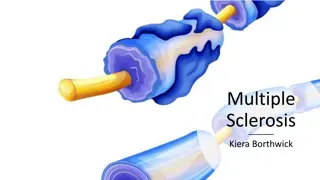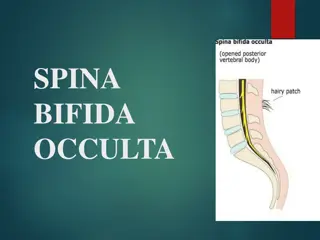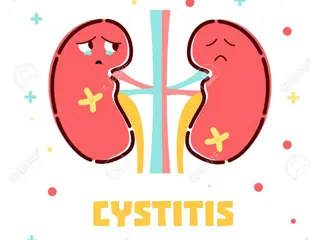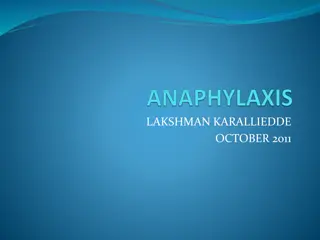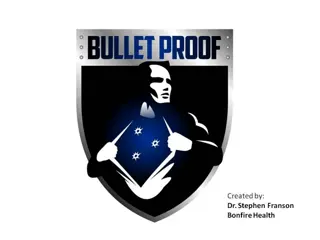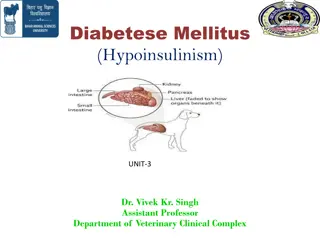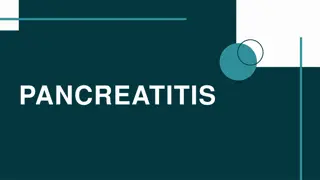Understanding Tetanus: Causes, Symptoms, and Treatment
Tetanus, also known as lockjaw, is a bacterial infection characterized by muscle spasms that can lead to severe complications. It is caused by the bacterium Clostridium tetani, commonly found in soil, saliva, and manure. Symptoms include muscle spasms, lockjaw, and difficulty swallowing. Tetanus can be prevented through vaccination. In severe cases, surgical treatment may be necessary. Proper wound care and vaccination are crucial in preventing tetanus.
Uploaded on Sep 17, 2024 | 0 Views
Download Presentation

Please find below an Image/Link to download the presentation.
The content on the website is provided AS IS for your information and personal use only. It may not be sold, licensed, or shared on other websites without obtaining consent from the author. Download presentation by click this link. If you encounter any issues during the download, it is possible that the publisher has removed the file from their server.
E N D
Presentation Transcript
Tetanus Tetanus known also as lockjaw is a bacterial infection characterized by muscle spasms in the most common type, the spasms begin in the jaw and then progress to the rest of the body each spasm usually lasts a few minutes and spasms occur frequently for three to four weeks spasms may be severe enough to cause bone fractures other symptoms of tetanus may include fever,, headache, trouble swallowing, high blood pressure and a fast heart rate
Tetanus Tetanus is caused by an infection with the bacterium Clostridium tetani which is commonly found in soil, saliva, dust, and manure the bacteria generally enter through a break in the skin such as a cut or puncture wound by a contaminated object they produce toxins that interfere with normal muscle contraction diagnosis is based on the presenting signs and symptoms, the disease does not spread between people
Signs and symptoms tetanus often begins with mild spasms in the jaw muscles also known as lockjaw or trismus the spasms can also affect the facial muscles resulting in an appearance called risus sardonicus back muscle spasms often cause arching, called opisthotonos even with treatment, about 10% of people who contract tetanus die, the mortality rate is higher in unvaccinated people and people over 60 years of age the incubation period of tetanus may be up to several months, but is usually about ten days
Cause of tetanus tetanus is caused by the tetanus bacterium Clostridium tetani tetanus is an international health problem, as C. tetani endospores are ubiquitous, endospores can be introduced into the body through a puncture wound - penetrating trauma the disease occurs almost exclusively in persons inadequately immunized it is more common in hot, damp climates with soil rich in organic matter Manure-treated soils may contain spores, as they are widely distributed in the intestines and feces of many animals such as horses, sheep, cattle, dogs, cats, rats, guinea pigs, and chickens, In agricultural areas, a significant number of human adults may harbor the organism the spores can also be found on skin surfaces and in contaminated heroin
Cause of tetanus tetanus can be contracted through surgical procedures, intramuscular injections, compound fractures, and dental infections animal bites can transmit tetanus tetanus is often associated with rust, especially rusty nails
Diagnosis there are currently no blood tests for diagnosing tetanus the diagnosis is based on the presentation of tetanus symptoms and does not depend upon isolation of the bacterium, which is recovered from the wound in only 30% of cases and can be isolated from people without tetanus laboratory identification of C. tetani can be demonstrated only by production of tetanospasmin in mice
Treatment Mild tetanus: mild cases of tetanus can be treated with: tetanus immunoglobulin (TIG),[1]also called tetanus antibodies or tetanus antitoxin, it can be given as intravenous therapy or by intramuscular injection metronidazole IV for 10 days diazepam oral or IV
Treatment Severe tetanus severe cases will require admission to intensive care. In addition to the measures listed above for mild tetanus human tetanus immunoglobulin injected intrathecally (increases clinical improvement from 4% to 35%) Tracheotomy and mechanical ventilation for 3 to 4 weeks. Tracheotomy is recommended for securing the airway because the presence of an endotracheal tube is a stimulus for spasm magnesium sulfate, as an intravenous (IV) infusion, to control spasm and autonomic dysfunction diazepam as a continuous IV infusion the autonomic effects of tetanus can be difficult to manage (alternating hyper- and hyperpyrexia/hypothermiaand may require IV labetalol,magnesium, clonidine, or nifedipine
Treatment debridement of tetanus prone wounds remains an important method of prophylactic therapy the value of antibiotics, such as penicillin and broad-spectrum agents, in the prophylactic treatment of tetanus has not been established prophylactic antibiotic therapy seems to be of value, however, in the treatment of contaminated wounds in which there has been delayed or incomplete debridement






